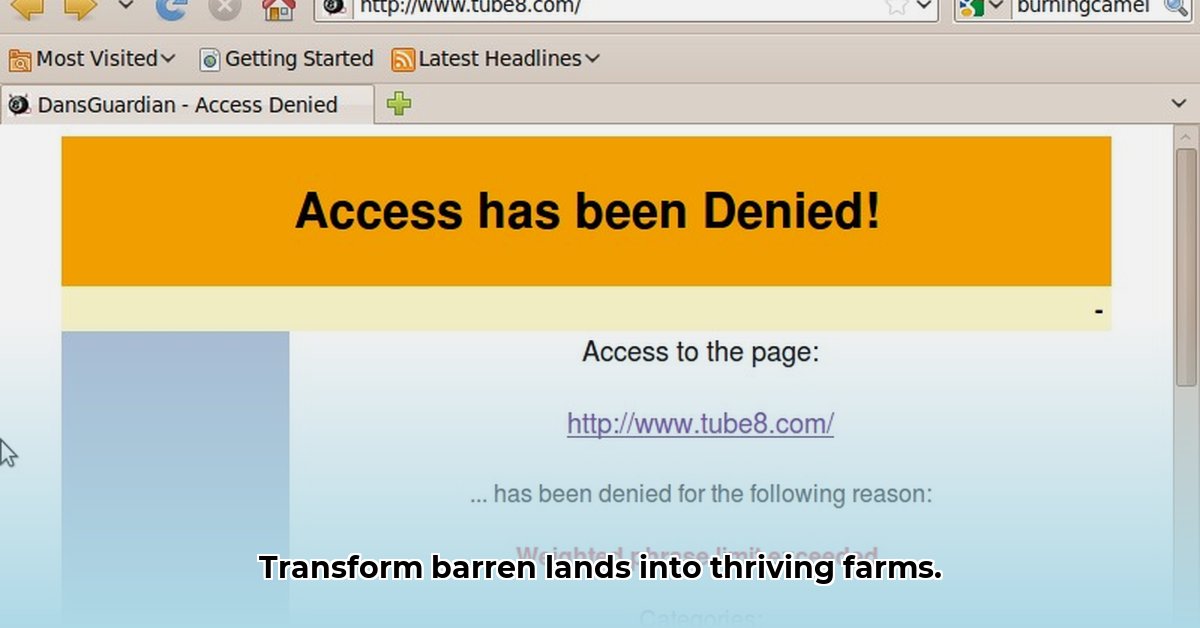
Imagine transforming a sun-baked, thirsty landscape into a productive farm. That's the power of precision farming, particularly in arid regions where water conservation is paramount. BurningCamel's technology is at the forefront of this revolution, providing innovative solutions to maximize yields despite the challenges of dry climates. This article explores how BurningCamel's data-driven approach is changing arid land agriculture, offering actionable steps for farmers and stakeholders alike. But first, let's consider a crucial question: Can technology truly overcome the inherent limitations of farming in arid environments, and if so, how?
How BurningCamel Works: A Technological Oasis in the Desert
BurningCamel's system isn't about guesswork; it's about harnessing the power of data to inform every decision. Think of it as a sophisticated network of interconnected technologies: soil sensors act as tireless monitors, constantly measuring moisture levels; drones provide high-resolution imagery of crop health, offering a bird's-eye perspective; and AI-powered irrigation systems deliver water with precision, minimizing waste and maximizing impact. This targeted approach translates directly to higher yields, reduced water consumption, and minimized fertilizer use.
But the true magic lies in the data analysis. BurningCamel's sophisticated algorithms don't just collect information; they interpret it, converting raw data into actionable strategies for farmers. Real-time updates on soil moisture, early warnings of potential crop issues (like disease), and precise irrigation schedules are delivered directly to farmers' smartphones or computers. This empowers farmers to proactively address challenges, ensuring higher yields and more efficient resource utilization. Dr. Anya Sharma, Agricultural Technology Expert at the University of Arizona, states, "BurningCamel's approach represents a paradigm shift. It's not just about technology; it's about empowering farmers with knowledge and control." This personalized approach is key to its success. How can data analysis help farmers anticipate and mitigate challenges before they significantly impact their crop production?
The Data Revolution: Transforming Raw Numbers into Strategic Actions
The data collected by BurningCamel's sensors and drones encompasses soil moisture levels, nutrient concentrations, plant health indicators, and weather patterns. This comprehensive data set allows for highly precise predictions of crop yields and the identification of potential problems early, such as nutrient deficiencies or early signs of disease. This predictive capability allows farmers to implement timely interventions, preventing significant yield losses. For example, early detection of a fungal infection through drone imagery might enable targeted fungicide application, preventing widespread damage and unnecessary chemical use. What are some other examples of how data-driven insights lead to proactive management practices in arid farming?
Navigating the Challenges: Overcoming Obstacles to Adoption
Despite the immense potential, challenges remain. The initial investment can be substantial, particularly for smallholder farmers. Reliable internet connectivity is crucial for data transmission and analysis, which can be a limitation in many rural areas. Data security is also critical, protecting farmers' valuable information.
BurningCamel acknowledges these hurdles. They are developing cost-effective solutions and collaborative models to increase accessibility, including options for leasing equipment and shared data platforms to reduce individual costs. Robust data encryption protocols ensure the confidentiality of farmers' information. Furthermore, they offer comprehensive training programs and ongoing support to help farmers understand how to utilize the technology and interpret the data effectively. This commitment to accessibility and education is vital for widespread adoption, ensuring benefits are equitably distributed. How can governments and NGOs support the implementation of precision farming technologies in arid regions to ensure equal access and reduce financial barriers?
A Practical Guide: Implementing Precision Farming Step-by-Step
Transitioning to precision farming is a phased process. Here's a structured approach:
- Farm Assessment: Begin with a thorough evaluation of your farm's specific needs and resources. Identify your key challenges and areas for improvement.
- Technology Selection: Choose the technologies that best align with your needs and budget. BurningCamel provides flexibility in system configuration.
- Training and Support: Invest in comprehensive training to ensure your team effectively uses the technology and interprets the data. Ongoing support is essential.
- Data Management Plan: Create a well-defined system for data collection, analysis, and security.
- Gradual Integration: Don't attempt a complete overhaul at once. Integrate technologies gradually, continuously monitoring their impact.
Weighing the Pros and Cons: A Realistic Assessment
Precision farming, while offering transformative potential, has both advantages and disadvantages:
| Advantages | Disadvantages |
|---|---|
| Increased yields and profitability | High upfront investment costs |
| Optimized water and fertilizer use | Reliance on reliable technology and internet access |
| Improved crop health and quality | Potential data security vulnerabilities |
| Data-driven decision-making | Need for skilled labor and ongoing training |
| Reduced environmental impact | Potential disruption to established practices |
The Future of Arid Farming: A Vision of Sustainable Growth
BurningCamel represents a beacon of hope for sustainable agriculture in arid regions. Its approach offers a tangible pathway toward higher yields, efficient resource utilization, and improved livelihoods. The technology's ability to transform challenging environments into thriving agricultural landscapes is a testament to the power of innovation. As Dr. Ricardo Alvarez, Director of the Center for Sustainable Agriculture at the University of California, Davis, notes, "Precision farming, coupled with appropriate water management strategies, holds the key to unlocking the agricultural potential of arid lands while safeguarding their ecological integrity.” What further technological advancements could further enhance precision farming's effectiveness in arid environments?
Key Takeaways: Actionable Intelligence for Arid Land Farming
- Precision farming offers a significant opportunity to increase yields and improve the sustainability of agriculture in arid regions.
- BurningCamel's technology provides a comprehensive solution, integrating various technologies and data analysis to optimize resource use.
- Successful implementation requires a phased approach, including thorough farm assessment, appropriate technology selection, and comprehensive training.
This article aims to provide a comprehensive understanding of precision farming technologies within the context of arid regions. By addressing the challenges and highlighting the potential benefits, we hope to further encourage the adaptation and implementation of these cutting-edge techniques in order to safeguard food security and promote sustainable agricultural practices in water-scarce environments worldwide.